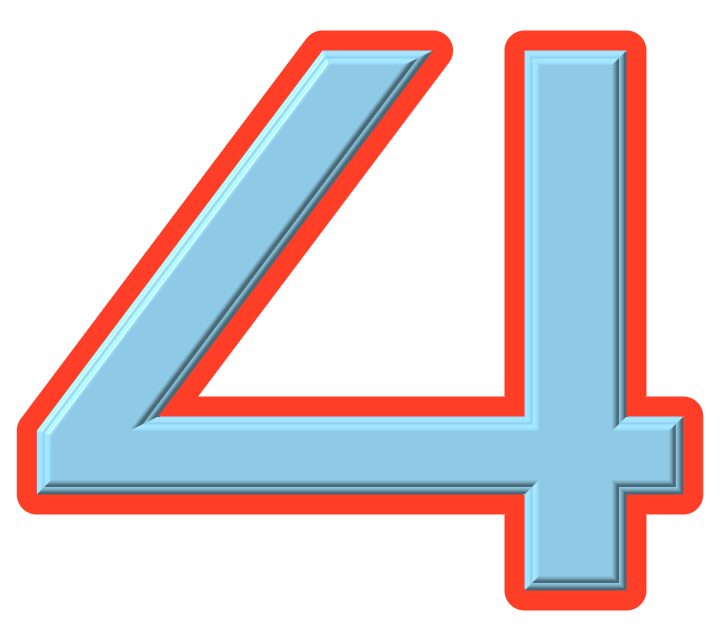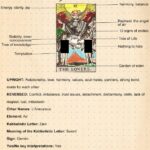Tarot cards have captivated audiences for centuries, leaving many to wonder about the meanings woven into each intricate design. Among the numerous symbols and archetypes that populate a Tarot deck, the number 4 stands out, representing stability, foundation, and structure. This article delves into the multifaceted meanings of the 4 Tarot card, laying out the significance through various lenses of interpretation, such as numerological significance, astrological association, and psychological insights.
In numerology, the number 4 transcends mere digits. It embodies solidity and practicality, a grounding force reminiscent of the firm earth beneath our feet. When considering the Tarot’s Four cards—specifically the Four of Wands, Four of Cups, Four of Swords, and Four of Pentacles—one can appreciate how these cards echo the energy of stability, order, and a sense of security amid chaos. As life becomes increasingly tumultuous, society often turns to these cards for solace, seeking the reassuring message that all will be well.
The Four of Wands symbolizes celebratory milestones, a card that heralds joy and recognition. Think of it as an architectural masterpiece: a sturdy structure with a joyous celebration erupting in its courtyard. It reminds us of the importance of community—the people we surround ourselves with and the bonds we nurture. Often appearing during significant life events, such as weddings or reunifications, this card serves as a reminder that while individual effort is crucial, the collective spirit amplifies success. Through communal joy, just as the number 4 signifies, we find a deeper sense of belonging.
Conversely, the Four of Cups introduces a more introspective energy. This card speaks to the theme of contemplation, urging the querent to pause and reflect. It portrays a moment of stagnation, an invitation to step back from the relentless pace of modern life. In a world dominated by noise and distraction, the Four of Cups teaches the virtue of stillness. This message resonates deeply in today’s society, prompting both self-awareness and critical evaluation of one’s desires. Is what we pursue truly what we seek? By urging a look inward, the Four of Cups opens the door to personal growth—an opportunity to redefine aspirations.
Moving toward the realm of rest and rejuvenation, the Four of Swords presents itself as a symbol of necessary withdrawal. It emphasizes recuperation and the need for a hiatus from the chaotic intrusions of everyday existence. Stress and anxiety have become all too familiar, leaving individuals yearning for a haven where they can replenish their spirits. The Four of Swords encourages turning inwards, a timeout infused with meditation and reflection—a sanctuary to heal wounds that often go unnoticed. This card resonates particularly in our fast-paced world, illustrating that in order to progress, one must first restore equilibrium.
The stalwart Four of Pentacles rounds out the quartet, illuminating themes of security, control, and materialism. While it can often indicate possessiveness or fear of loss, there is an underlying message that speaks to the human desire for stability. In uncertain times, people gravitate towards retaining what they have built—be it riches, relationships, or emotional stability. However, this desire also raises questions regarding balance. How much security is too much? When does control transform into constriction? The Four of Pentacles challenges our understanding of sufficiency versus scarcity, pushing forth conversations about trust and letting go.
Viewing the Four cards through these varied lenses unveils a coherent narrative about the human condition. They underscore a common observation: that despite the tumultuous nature of life, a quest for stability remains fundamental. This pursuit can manifest in various forms, reflecting desires that are often interwoven with deep-seated fears and aspirations. The Tarot provides not just answers but also prompts that ignite contemplation—a mirror to our internal dialogues.
Moreover, the astrological attribution further deepens the understanding of the number 4 across these cards. Earthy signs such as Taurus, Virgo, and Capricorn often intersect with the symbolism of these cards, reinforcing the themes of stability and practicality. Earth energy is synonymous with material concerns and tangible outcomes. This connection helps ground the often ethereal explorations of Tarot, offering a practical approach to the insights these cards provide. Incorporating this astrological angle encourages followers to seek balance, establishing a harmonious relationship between the material and spiritual realms.
As individuals engage with the Tarot’s Four cards, they may uncover far more than mere forecasts for future occurrences. Beneath the visual splendor and layered meanings lies an intricate tapestry of stories—stories that address collective human experiences. The relationship we maintain with stability and security intertwines with personal evolution, making these cards not just a source of guidance but a mode of exploration. Their meanings resonate prominently, suggesting that stability does not imply stagnation but rather provides a solid foundation from which one can embark on journeys into the unknown.
Ultimately, the Four Tarot cards evoke a reflection on existence itself. They beckon seekers to confront what grounds them, urging exploration not just of the external world but of the inner landscapes that shape desires, relationships, and journeys. As society wrestles with uncertainties in the contemporary age, the presence of the number 4 invites contemplation—an inquiry into the structures that support our lives, the communities that uplift us, and the self-awareness that illuminates our paths. Thus, the fascination with these cards is woven into the very fabric of human experience, highlighting the universal pursuit of balance amidst life’s inevitable flux.







Leave a Comment